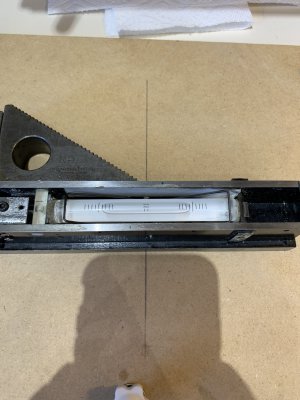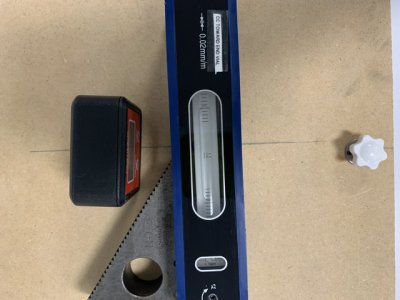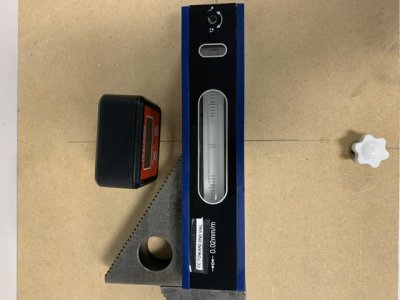- Joined
- Oct 11, 2016
- Messages
- 3,860
@graham-xrf I don't want to hijack this thread, but to design a stand to do what you want, you need to think like a bridge designer, with the goal to minimize strain (deflection) not strength. It is pretty tricky. As you said, sometimes beefier just means more steel, not any sturdier. Ironically, strength is not important - wait for it - If you design for minimum deflection, it will be more than strong enough.....
My first lathe stand (for my 12X37, 800lbs), before I understood how to make it stiff, did the job okay, because it was intended to be used on a concrete floor. It was 2X2 by 3/8 angle iron forming a square, with 1" thick pads (for bolting the machine down) welded to them, and 3" X 3" by 3/8 legs that formed flat topped "A" formation. the long side had 2 4' diagonals of 1"X1" by 3/16 angle forming about a 48X30X24 triangle.
BUT that structure wouldn't do what you suggest. It has to be so rigid that if you lift any one leg, the other diagonal legs will be lifted without sagging appreciably. Wood, a topping material, would do okay, but not as the structure. Just a few thoughts.....
You could build a rim base, a box however high out of 10 gauge steel, with a appropriate mounting system. However to stop it from 'racking' you would need diagonals in both directions as well. As I implied earlier, it is very hard to build a rigid structure for lathe based weights.
--that is why we accept 'limp spaghetti' stands, and make the bed planar through various techniques, including leveling and the 2 collar test. That is also why we need to recheck for straight after moving a week, month and several months after.
-- one last point: the lathe is also culpable in this. If it has been twisted for a while, it will take time to relieve its twist. So you over twist it to get planar, then it 'relaxes', and over twists, and it is now bent the OTHER way. I've seen it a lot.
My first lathe stand (for my 12X37, 800lbs), before I understood how to make it stiff, did the job okay, because it was intended to be used on a concrete floor. It was 2X2 by 3/8 angle iron forming a square, with 1" thick pads (for bolting the machine down) welded to them, and 3" X 3" by 3/8 legs that formed flat topped "A" formation. the long side had 2 4' diagonals of 1"X1" by 3/16 angle forming about a 48X30X24 triangle.
BUT that structure wouldn't do what you suggest. It has to be so rigid that if you lift any one leg, the other diagonal legs will be lifted without sagging appreciably. Wood, a topping material, would do okay, but not as the structure. Just a few thoughts.....
You could build a rim base, a box however high out of 10 gauge steel, with a appropriate mounting system. However to stop it from 'racking' you would need diagonals in both directions as well. As I implied earlier, it is very hard to build a rigid structure for lathe based weights.
--that is why we accept 'limp spaghetti' stands, and make the bed planar through various techniques, including leveling and the 2 collar test. That is also why we need to recheck for straight after moving a week, month and several months after.
-- one last point: the lathe is also culpable in this. If it has been twisted for a while, it will take time to relieve its twist. So you over twist it to get planar, then it 'relaxes', and over twists, and it is now bent the OTHER way. I've seen it a lot.





